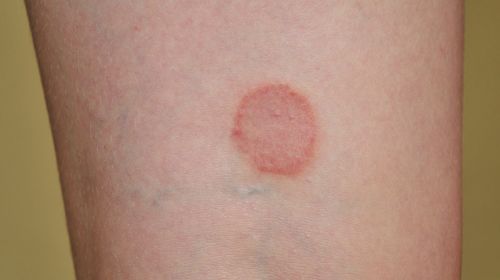Papillomas are benign growths on the skin or mucous membrane that can be caused by viruses. Typical age warts are one form of papilloma. How does a papilloma develop, where it can occur anywhere and when treatment is necessary.
- Papillomas on the skin are benign and usually do not need to be removed.
- © Getty Images / LightFieldStudios
What is a papilloma?
A papilloma is a benign growth of skin or mucous membrane cells. Papillomas are benign tumors and can develop anywhere in and on the body. Most often they occur on the skin, the lining of the mouth, in the nose, on the urinary tract, on the milk ducts of the breast or on the larynx. They grow either individually or in groups. The small growths are mostly flat and have a cauliflower-like appearance. But they can also sit elongated and stalk-like on the skin. Papillomas are similar to warts. If they appear on the skin, they are therefore also known as skin warts.
At a glance:
Causes of papillomas
The triggers for the development of papillomas are often unclear. They can be caused, among other things, by the human papilloma virus (HPV). More than 200 papilloma viruses are currently known, most of which colonize the skin and mucous membranes. Some types of viruses cause papillomas. But they are less dangerous than the cancer-causing HP viruses, which are mainly transmitted during sexual intercourse.
The viruses that cause papilloma are mostly transmitted through skin contact. But genital HP viruses can also trigger papillomas. It is known, for example, that HPV can also be transmitted to the newborn at birth, which can lead to laryngeal papillomas in the child.
Treat papillomas
Papillomas are benign tumors and do not cause pain. They are therefore often considered harmless. However, there is a risk that the tissue will degenerate and develop cancer. Because of this, papillomas are often removed. In order to rule out cancer or a preliminary stage of cancer, the ablated tissue is usually examined with a fine tissue (histological). You can also determine whether HPV is the trigger for the growth. Different types of papillomas are treated differently.
Skin papillomas: appearance and treatment
A skin papilloma is an overgrowth of the upper skin (epidermis). A papilloma that forms on the skin is also known as a seborrheic wart or basal cell papilloma. Since they usually appear from the age of 50, they are also known colloquially as age warts. They are relatively common, especially on the chest, back, face and neck area. Often they also arise in skin folds.
-
A typical papilloma on the skin in close-up.
© Getty Images / Tetiana Mandziuk
Appearance: Skin papillomas are rounded to oval skin growths and occur individually or in groups. They are usually light brown, gray-brown to black, have a fissured and soft surface and can be up to several centimeters in size. Occasionally they itch. If clothing or skin folds rub against it, they can occasionally bleed.
treatment: Since skin papillomas are benign tumors, they rarely require treatment from a medical point of view. However, if they are found to be bothersome, they can be surgically removed under local anesthesia. Removal is necessary if skin cancer is suspected.
Oral mucous membrane papillomas
Papillomas can appear anywhere in the oral cavity. Most often, however, they arise on the roof of the mouth, on the tongue or on the lips. The causes are varied. The triggers include HP viruses, but also irritation of the oral mucosa or poorly fitting dentures.
Appearance: The growth on the oral mucosa is mostly broad-based, raised and has a furrowed surface.
treatment: The oral mucous membrane papilloma is surgically removed under local anesthesia with a scalpel or ablated with a laser. Icing is also possible.
Inverted papilloma of the nose and sinus
The so-called inverted papilloma is a benign growth on the mucous membrane of the nose or the paranasal sinus. It is usually noticeable because breathing is disturbed on one side of the nose, and a chronic runny nose often develops. It is not medically clear why a papilloma can develop in the nose. However, HPV is also a possible cause here.
Appearance: Visually, the inverted papilloma resembles nasal polyps. It's wide and cauliflower-like.
treatment: Papillomas of the nose or sinuses grow quickly. Even if the skin cell overgrowth is benign at first, the cells can degenerate and promote cancer. In addition, the surrounding bone tissue can be damaged by the rapid growth. For this reason, inverted papillomas are usually removed endoscopically through the nose. In many cases, however, the papillomas reappear and have to be removed again.
Papilloma in the milk duct of the breast
The duct papilloma is one of the benign breast tumors in women and occurs only very rarely. It is often found in the milk ducts near the nipple. Fluid often escapes from the affected nipple, it can also be painful or bleed easily.
Appearance: The duct papilloma is a cauliflower-like growth. It can appear singly or as a collection of several small papillomas.
treatment: First, the fluid that leaks from the breast is examined under a microscope for abnormal cell changes. To determine the size and spread of the papilloma, galactography, mammography, ultrasound or a milk ductoscopy are often performed. Since, in some cases, a duct papilloma can develop into cancer, it is most often surgically removed.
Larynx papilloma
The larynx papilloma is one of the most common benign tumors of the larynx. If several papillomas develop on the larynx in adults, it is often a viral infection. If the papilloma occurs individually, the cause is usually unclear. Men are affected more frequently than women. Laryngeal papillomas in children are often virus-related. If they occur in large numbers, one speaks of a so-called papillomatosis. Typical symptoms of one or more larynx papillomas are hoarseness and even loss of voice. If the growth is large, breathing is often disturbed.
Appearance: Broad, reddish, cauliflower-like swelling that sits on the vocal folds or in the rest of the larynx. Laryngeal papillomas can also affect the windpipe.
treatment: Because they hinder speech and breathing, but can also degenerate, they are always surgically removed. Laryngeal papillomas often reappear, which usually leads to repeated interventions.
Bladder papilloma
The bladder or bladder papilloma is a benign tumor of the urinary bladder. A noticeable symptom is blood in the urine with no pain when urinating.
Appearance: Cauliflower-like tumor.
treatment: If you have a papilloma in the urinary bladder, there is a very small risk of developing cancer. Nevertheless, it is usually removed surgically, usually minimally invasively via the urethra.
Can you prevent a papilloma?
It is difficult to prevent or prevent papillomas. Especially when the trigger is the widespread human papillomavirus that is transmitted through skin contact. Good personal hygiene can reduce the viral load, but that doesn't prevent the transmission of HPV either. The viruses can also be passed on via objects. Therefore, towels, washcloths or razors should not be shared with each other. There is a vaccination recommendation for girls and boys against HPV. The HPV vaccination only prevents infection with certain genital human papilloma viruses. For most of the types of virus that cause papillomas, however, there is no preventive vaccination. In addition, a papilloma often develops without an identifiable cause and can therefore not be avoided.



